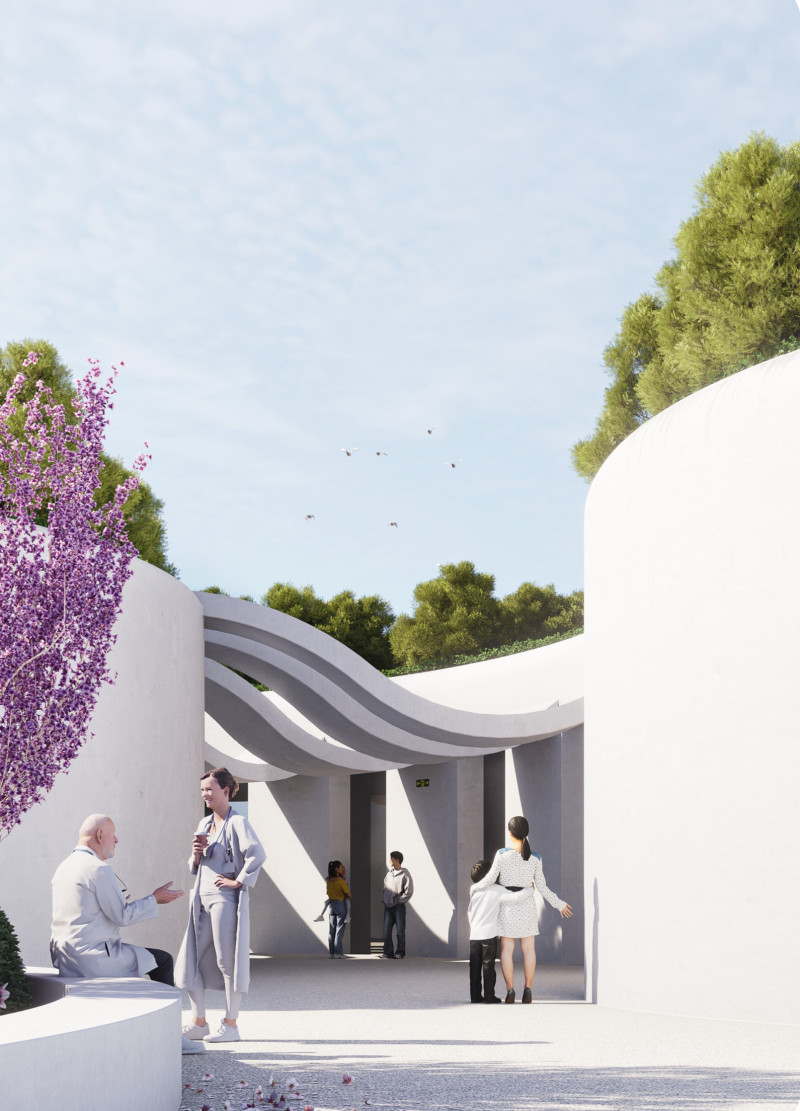5 key facts about this project
At its core, the project functions as a multi-use facility that promotes community interaction and engagement. Its layout facilitates a dynamic flow of activity, encouraging users to connect not only with the space but also with one another. This aspect of the design highlights the importance of social cohesion in architectural practice, emphasizing the role that built environments play in fostering interpersonal connections. The inclusion of open areas, communal spaces, and flexible room configurations invites a diverse range of activities, from group gatherings to educational workshops, making it a hub for community-oriented programs.
The architectural design incorporates a range of materials that contribute to its distinct character and performance. Key materials include concrete, glass, timber, and steel, each chosen for its unique properties and sustainability credentials. Concrete provides the structure with durability and robustness, while its thermal mass properties help regulate temperature, contributing to the project's energy efficiency. Large expanses of glass are utilized not only to maximize natural light but also to create a visual link between indoor and outdoor environments, enhancing the user experience and fostering a sense of connection to nature. Timber elements soften the overall aesthetic, adding warmth and texture, while steel is employed for structural integrity, allowing for innovative design solutions and extensive spans.
The project's unique design approaches are evident in its integration of biophilic design principles, which aim to connect inhabitants with nature. This is achieved through strategically placed landscaping, living walls, and outdoor terraces that extend the usable space beyond the building’s footprint. The design carefully considers factors such as sunlight, wind patterns, and local flora, ensuring that the architecture not only coexists with the environment but actively enhances it. Such considerations extend to the project’s sustainability initiatives, including rainwater harvesting systems and energy-efficient HVAC technologies, showcasing a commitment to reducing the ecological footprint while maintaining comfort and usability.
Moreover, the architectural expression of the project is informed by local vernacular and contextual cues, allowing it to resonate with its surroundings. The form and materials reflect traditional building practices, yet the overall composition is refreshingly modern. This dialogue between past and present creates a sense of place that respects historical narratives while inviting innovation. Key design elements, such as sloped roofs or shaded overhangs, may also draw inspiration from regional architectural styles, further embedding the project within its cultural landscape.
Significant attention is paid to the details of the design, where elements such as lighting fixtures, finishes, and furniture selections are thoughtfully curated to enhance the architectural narrative. The interplay between light and shadow is carefully orchestrated through the manipulation of canopy structures and fenestration, creating inviting atmospheres that adapt throughout the day. A cohesive color palette predominates, tying together various elements of the design while allowing for individual expression in communal and private spaces alike.
Exploring this architectural project reveals a comprehensive understanding of user needs intertwined with an acute awareness of environmental impact. The design not only addresses immediate functionality but also poses questions about the role of architecture in shaping community life and engaging with the natural world. For those interested in gaining deeper insights into this project, examining the architectural plans, architectural sections, and varied architectural designs will provide a richer understanding of the innovative ideas that have been employed. This project stands as a reflection of thoughtful architectural practice that prioritizes both human connection and ecological responsibility, inviting all to experience its myriad possibilities.


 Federico Bullara
Federico Bullara 




















